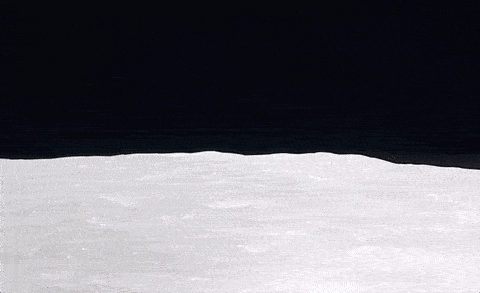The Japanese satellite Kaguya orbited the Moon for twenty months, from 2007 to 2009. I opened some of its footage on YouTube and randomly clicked halfway the video. The lunar surface was whitely brightened by the Sun, which was in full behind the viewpoint of the camera. Then suddenly the blue sphere of Earth rose from the Moon’s horizon, quickly into view. My stomach twisted, with a feeling that a gripping book or song can provide, moved and touched in ones deepest convictions. The Earth quickly moved out of the viewpoint again, as the Sun’s light casted increasingly longer shadows on the irregular surface, darkening the screen.
It’s the same impression as seen by the crew of the Apollo 8 spacecraft on December 24th, 1968, when Bill Anders took a photo documented as ‘AS8-14-2383’, which became famous named ‘Earthrise’. Or as provided by the image taken six billion kilometers away in 1990, the Pale Blue Dot, which prompted Carl Sagan’s words: “That’s here. That’s home. That’s us. On it, everyone you ever heard of, every human being who ever lived, lived out their lives.”
We usually see the sky as something that’s above us, but we forget that its in all around us. We’re stranded on a small island in the vastness of space, a home we don’t master, as hurricane Irma teaches us.
Humbleness and care for our cage would be appropriate, because this tiny rock is all that we’ve got. A shift of viewpoint as provided by Earthrise is a stark reminder.




